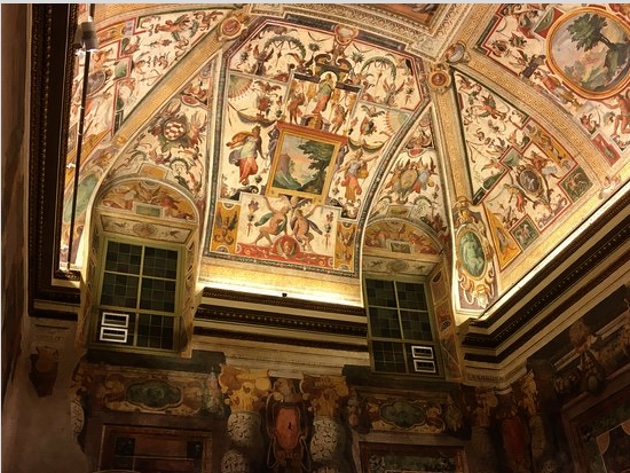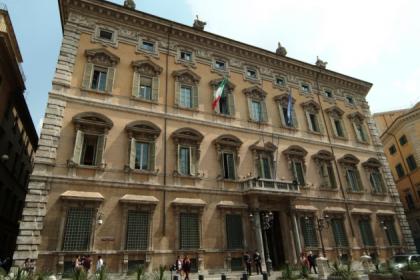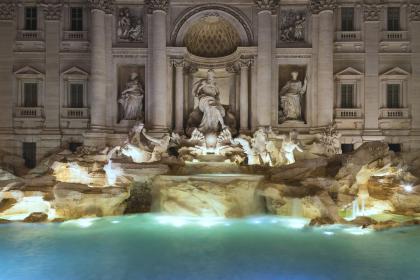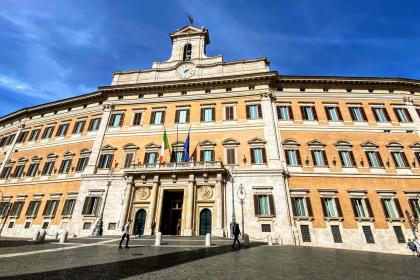
It was built at the end of the sixteenth century at the behest of Monsignor Francesco Vento. The original nucleus, dating back to 1585, is probably due to the architect Giovanni Fontana. In 1590 the building was purchased by the powerful Giustiniani family who moved to Rome from the island of Chios in the Aegean, following the reconquest of the latter by the Turks.
With the increasing prestige acquired by the Giustiniani family, from 1650 considerable works to enlarge the building were undertaken, according to some projects by Borromini. The works continued until the beginning of the eighteenth century, with the construction of the staircase and the courtyard, arriving to incorporate buildings up to Piazza della Rotonda. The palace housed the important collection of sculptures and paintings by Vincenzo Giustiniani (1564-1637), which included among other things works by Caravaggio, Raphael, Giorgione, Titian and Andrea del Sarto, as well as numerous pieces from the Roman era. For this reason, the building became a destination for artists and scholars until the eighteenth century, and was described in many guides of the time.
The main facade has a large decentralized portal with columns and a balcony, on the sides of which there are three and five large windows with grates. On the first floor there are other windows with architraves, while on the second and third they are simple squared. The same architectural scheme can be found on the other sides of the building, on via dei Giustiniani and on the ascent de‘ Crescenzi.
With the dispersion of the collection between the end of the 18th and the beginning of the 19th century, the building experienced a period of decline; later, in 1898, it became the seat of the Freemasonry of the Grand Orient of Italy. In 1943 it was bought by the state, and after some restorations, it was used as the President of the Senate's residence. In the hall of the library, on December 27, 1947 the Constitution of the Italian Republic was signed by the President of the Republic Enrico De Nicola. The palace is connected with Palazzo Madama, seat of the Senate, by an underground gallery built in 1938.
Photo credits: Giustiniani Palace official site
Palazzo Madama (Sitz des italienischen Senats)

 Condividi
Condividi
Trevi-Brunnen

 Condividi
Condividi
The most famous of the Roman fountains: a jewel of water and stone
Palazzo di Montecitorio

 Condividi
Condividi
Informationen
 Condividi
Condividi
Location
Um mehr über alle barrierefreien Dienste zu erfahren, besuchen Sie den Abschnitt barrierefreies Rom.











































